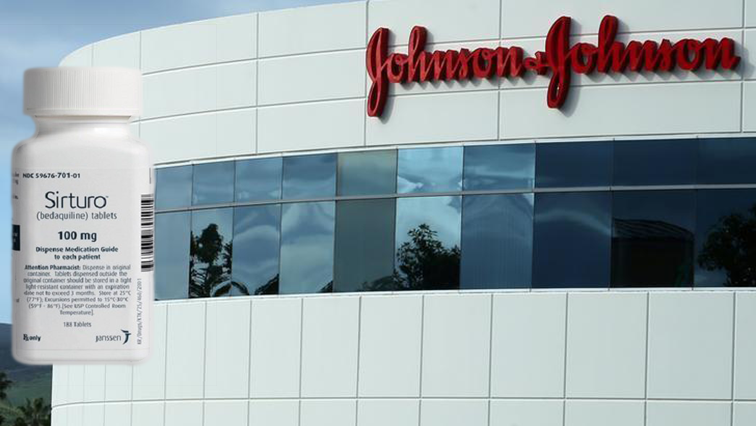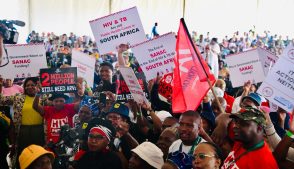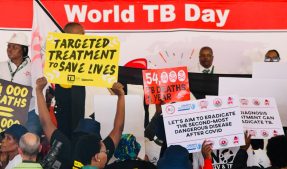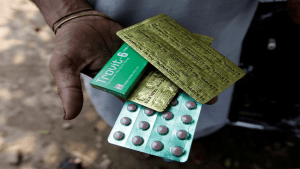One of the major factors that big pharmaceutical companies consider when new drugs are introduced, is whether health facilities have the ability to apply and maintain new regimens successfully.
The deputy president of the Johnson and Johnson’s group for Tuberculosis and worldwide health, Cat Oyler, says when they introduced Bedaquiline to the world, it was the first innovative drug against TB in years.
“Up to date, we’ve been able to ship up to 180 000 courses of our medicine to almost 140 countries. In September of 2018, we announced a 10-year initiative focusing on continuing our efforts in TB, around expanding access to treatment, including our medicine and finding the missing patients. Also, we are continuing our efforts in research and development to develop a new medicine.”
Three elements are considered when it comes to pricing.
“The first is the value to the patient, the second is access and affordability, and the third is an incentive for innovation. However, we do recognise that there is a uniquely high burden of MDR-TB in low resource settings, and because of that, we have offered Bedaquiline to nearly a 140 countries at a not-for-profit-price of only $400,00.”
During the World Union Conference of Lung Health earlier this year, activists specifically linked to Doctors without Border’s Access Campaign, said the donation of drugs alone was not enough.
“One of the other things mentioned by the activists is that only 37 000 courses of therapy have reached patients. But as I mentioned earlier we know we’ve shipped more than 180 000 courses, including more than 100 000 courses this year alone. What that highlights is the issue that we all need to be working to address capacity and capability building. There’s clearly a gap in these innovative medicines reaching patients.”
Oyler says this gap shrinks when the capacity of a country’s health facilities is expanded.
“We need to make sure that healthcare providers are trained, and identifying the signs and symptoms of TB, that they have access to the right diagnostic tests, that they know how to build an appropriate regimen. You need to be able to get patients back for a follow-up appointment and for testing. We think it’s most critically important if we’re going to close the gap between the fact that we shipped 180 000 courses of therapy, but yet we’re hearing that only 37 000 courses have reached patients.”
Every country is treated differently.
“In India alone, we donated through our partner USAID, 22 000 courses of therapy, and we’re really committed to working with the government to ensure it’s utilised appropriately. In SA the government has been extremely committed and as part of the recognition of their efforts and leadership, in switching to oral regimens, that was the inspiration for us to lowering the price to $400. South Africa has been regularly accessing the drug, and successfully treating its patient population.”
Oyler says thus far, they haven’t approached any generic companies.
“We’re priced on par with or cheaper than many generics in the field already. We are not seeing supply or price as a barrier. What we are seeing is that, based on the activists’ claims, there’s still a gap in getting the drugs to patients.”
The director of international marketing at the generic drug manufacturing company, Hetero Drugs, in India, Bhavesh Sha says the company produces at least 40% of all ARV-generics worldwide.
“It was more of a holistic approach to see how we can reach as many as possible patients… 15/20 years back it was like a death warrant. But today with the efforts of various companies including ours, all patients have been able to have some kind of hope,” says Sha.
I asked about the latest developments concerning MDR-TB.
“The new drugs coming in, we believe that it’s going to follow a similar mechanism as HIV. It’s too early with those new drugs – there are very few new drugs that have entered the TB space in the last 10 years. Other drug combinations started coming in through the TB alliance and other associations. We make sure that they do know that the only path that can give us success treatment in middle- and lower-income countries would be the pricing factor.”
From his experience, every country has unique relationships with relevant pharmaceutical companies.
“In India, we have many flexible standards when it comes to manufacturing which may not be as appropriate as the other regulated countries, including South Africa. Even in India, over the last few years, they’ve been upgrading their standard requirements for manufacturing. Take an example of brazil – one of the countries who will use a compulsory license if their community is affected without drugs, because of the high pricing of innovative products.”
Legislation in India allows for much more flexibility concerning intellectual property than South Africa. This allows the country to play its role as the so-called largest manufacturer of generic medicines in the world. However, after travelling to Africa frequently for the last 25 years, Sha says the continent’s ability use new drugs effectively, and to produce its own medication, is visibly improving.
“Over the last 10 years, if you see Africa as a continent, the WHO, USAID, MSF, Unicef, UNITAID and UN organisations, played a pivotal role, in educating every country into what are the regulatory standards and what health care facilities should look like. In just under 10 years, I’m seeing the continent on a very different platform – trust me. I have seen the transition in the last 20 years of me being in Africa. I’ve seen those things that were there 20 years back, what was there 10 years back and what is there now and the way they are successful and implementing a lot of health care systems into their countries. It’s just a matter of time.”






